bearing bush
Bearing bush for rotary kiln
Bearing bush is a significant part of rotary kiln. When the rotary kiln rotates, the wheel belt installed on the cylinder body drives the tug wheel to rotate by friction, and the tug wheel journal is supported by the bearing bush. Bearing bush for rotary kiln not only bears the static load of bearing reaction force, wheel belt, supporting wheel and other components, but also bears dynamic load and impact load.

Copper bearing bush
Bearing bush for rotary kiln is generally cast with aluminum bronze. The characteristics of this material are: high mechanical properties, good wear resistance in the atmosphere, fresh water and sea water, good casting performance, compact structure, high air tightness, resistance to Good abrasiveness, not easy to braze, and good casting performance. Main applications: important castings that require high strength and good corrosion resistance, are one of the main materials for manufacturing ship propellers, and can also be used as wear-resistant parts and work below 400 ℃, such as bearings, gears, worm gears, nuts, flanges , valve body, guide casing and other castings. Rotary kiln bearing bushes, bushings, copper bushes and copper pads produced by AGICO Cement are smooth in appearance and durable.
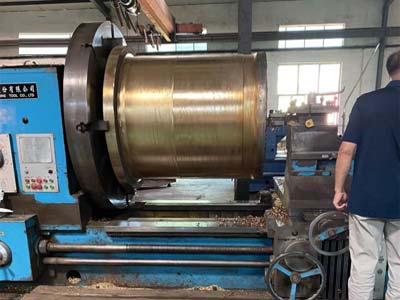
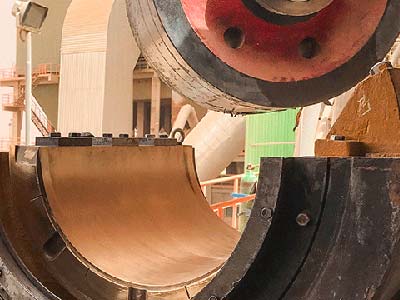
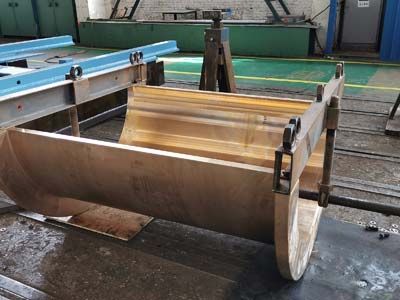
Zinc-alloy bearing bush
Bearing bush for rotary kiln can also use zinc alloy to reduce cost.In large rotary kiln, zinc alloy bearing bush for rotary kiln has obvious advantages:
(1) The friction coefficient is small, the thermal conductivity is high, and the service life is 2 to 3 times that of tin bronze. It is suitable for medium and low speed and heavy load occasions.
(2) It is easy to process, and the surface roughness can be reached after finishing.
(3) The casting performance is good, the castings are dense, and the castings with a wall thickness of 2.5mm can be cast.
(4) It has high strength, high toughness and good low temperature performance, which overcomes the low temperature brittleness of ZA27 alloy.
(5) Light weight, 40% lighter than copper, easy to install.
(6) The cost is low, which is more than 40% lower than that of tin bronze.
(7) It has non-magnetic and non-sparking properties.

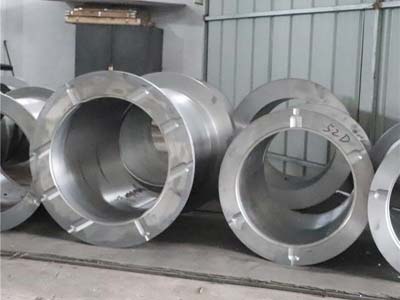
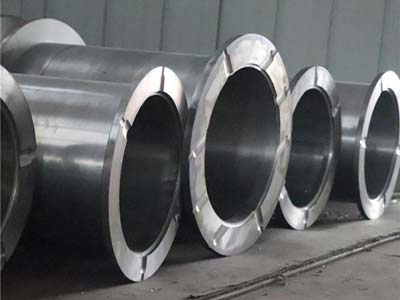
Adjustment method of bearing bush for rotary kiln temperature rise and heat generation
Problem 1: If the central control reports that the tile temperature or the oil pool temperature exceeds 45°C, the on-site personnel should be sent to determine the specific heating part, whether it is the end face heating or the tile surface heating.
Adjustment method: use the two-handed spiral law to guide the adjustment of the roller seat on the spot. The method is simple and practical, that is, facing the roller, hold the left and right middle finger, ring finger and little finger tightly, and the direction is the same as the rotation direction of the roller. The thumb is straight, the direction of the thumb is the moving direction of the supporting roller (the axial direction of the rotary kiln), and the direction of the index finger is the moving direction of the supporting roller (the radial direction of the rotary kiln).
Problem 2: The thrust surface is overheated.
Adjustment method: when the thrust surface of a supporting roller seat tile is hot, the gap between the thrust plate and the tile can be changed by advancing (retracting) the supporting roller seat to move the supporting roller along the direction of the center line of the kiln to eliminate friction and heat generation. In order to keep the center line unchanged, after adjusting the supporting roller seat, adjust the supporting roller seat that is diagonally opposite to it in the supporting roller.
Problem 3: The tile surface is overheated.
Adjustment method: when the tile surface of the supporting roller seat is heated, the supporting roller can be moved along the vertical direction of the center line of the kiln by withdrawing the supporting roller seat to relieve the stress of the tile and eliminate the heat generation.


